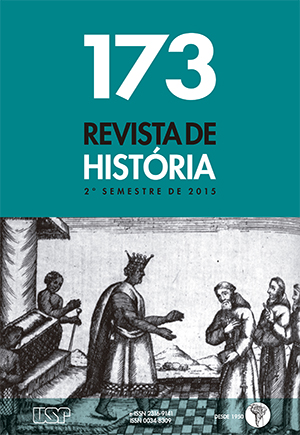The Impressão Régia do Rio de Janeiro and the making of the New Portuguese Empire in America
DOI:
https://doi.org/10.11606/issn.2316-9141.rh.2015.107386Keywords:
Portuguese Empire, Enlightenment, pressAbstract
This paper analyzes the political role played by the Impressão Régia do Rio de Janeiro in the context of the installation of the Portuguese court in America. Heir of typographies created in the kingdom in the late eighteenth century, under the Portuguese enlightened reformist project, the Impressão Régia do Rio de Janeiro preserves the pragmatic function of print and dissemination of useful knowledges for the development of the Empire, which characterized typographies such as Arco do Cego, created in 1799. Based on an enlightened model of knowing to intervening in reality, made the dissemination of the Lights in the Portuguese empire not only a cultural but also a political function. In the face of the political tensions that were caused by the new situation created by the Empire seat moving, the Impressão Régia do Rio de Janeiro has played an important role in legitimizing and sustaining of the political project of a new Portuguese Empire creation in America, a long cherished by enlightened Portuguese scholars and statemen. Seeking, thereby, highlight the intrinsic relationship between culture and power in the Portuguese enlightened reformism.Downloads
Download data is not yet available.
Downloads
Published
2015-12-17
Issue
Section
Articles
License
Autores que publicam nesta revista concordam com os seguintes termos:
- Autores mantém os direitos autorais e concedem à revista o direito de primeira publicação, com o trabalho simultaneamente licenciado sob a https://creativecommons.org/licenses/by/4.0/ (CC BY). Esta licença permite que outros distribuam, remixem, adaptem e criem a partir do seu trabalho, mesmo para fins comerciais, desde que lhe atribuam o devido crédito pela criação original. É a licença mais flexível de todas as licenças disponíveis. É recomendada para maximizar a disseminação e uso dos materiais licenciados.
- Autores têm autorização para assumir contratos adicionais separadamente, para distribuição não-exclusiva da versão do trabalho publicada nesta revista (ex.: publicar em repositório institucional ou como capítulo de livro), com reconhecimento de autoria e publicação inicial nesta revista.
- Autores têm permissão e são estimulados a publicar e distribuir seu trabalho online (ex.: em repositórios institucionais ou na sua página pessoal) a qualquer ponto antes ou durante o processo editorial, já que isso pode gerar alterações produtivas, bem como aumentar o impacto e a citação do trabalho publicado (veja O Efeito do Acesso Livre).
How to Cite
BARRA, Sérgio Hamilton da Silva. The Impressão Régia do Rio de Janeiro and the making of the New Portuguese Empire in America. Revista de História, São Paulo, n. 173, p. 253–276, 2015. DOI: 10.11606/issn.2316-9141.rh.2015.107386. Disponível em: https://revistas.usp.br/revhistoria/article/view/107386.. Acesso em: 16 jul. 2024.







